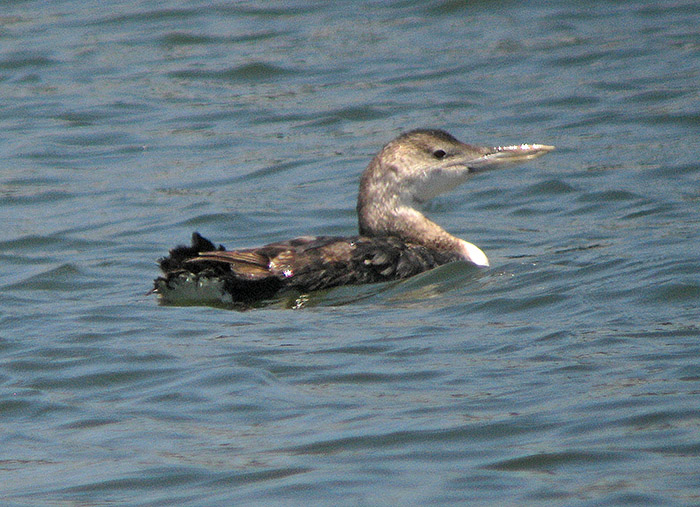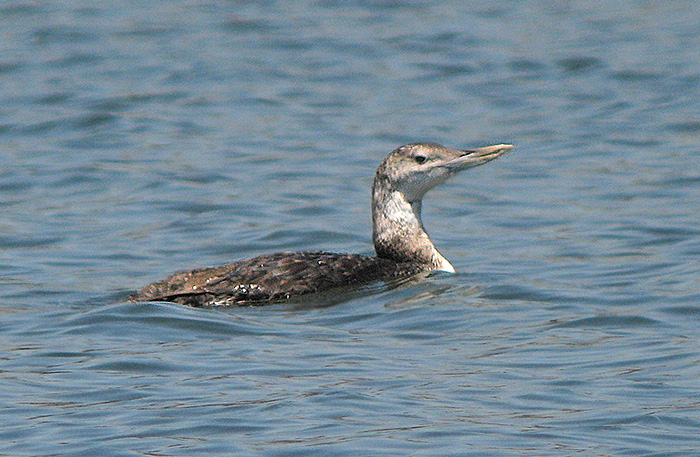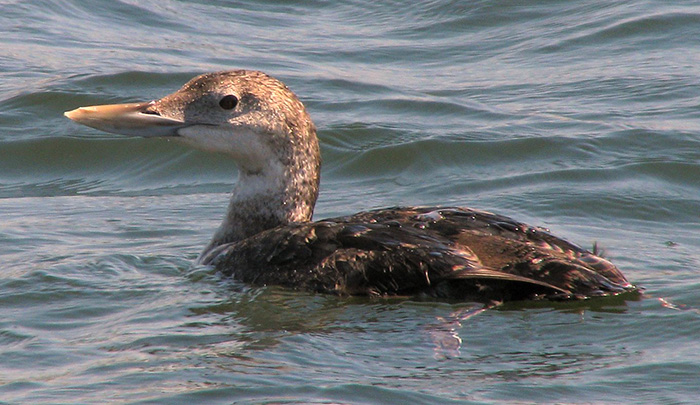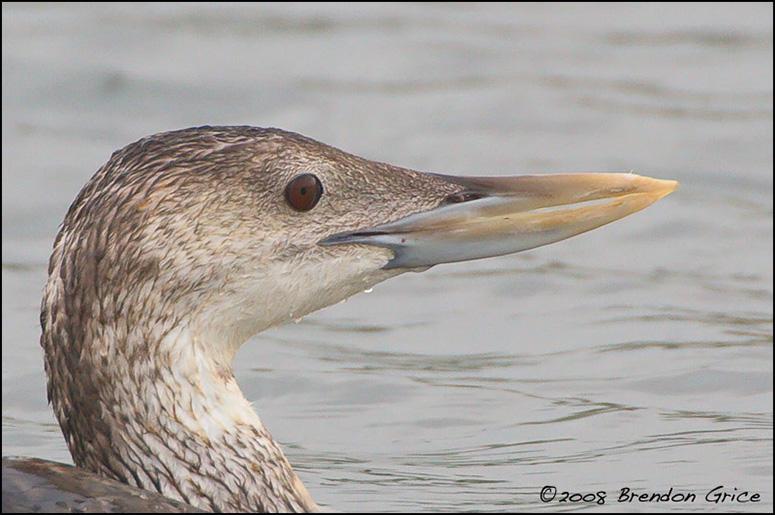 |
 |
|||||||||||||||||||||
|
||||||||||||||||||||||
Yellow-billed Loon (Gavia adamsii), Tempe Town Lake, Maricopa County
Dan Barrett found this astonishing Yellow-billed Loon on Tempe Town Lake on 20 May 2008. It was photographed the same day by Michael Moore. The next day Jack Halloway got some rare flight shots of this species and Pierre Deviche some nice close ups. The bird continued to show well on 22 May 2008 when Brendon Grice also got some spectacular close ups. On the moring of 24 May 2008 it was reported to take off at dawn and then circled higher and higher, three times over the West Dam, and then flew high to the West, not to be seen again.
There are four previously accepted records for Arizona (one for Maricopa County in 1984), although some other sightings are pending with the ABC. What it is doing here in late May in triple digit temperatures is anyone's guess. A strong storm pushed through Arizona a couple of days after the loon was first dectected, but the loon was present before the arrival of the storm. Since this part of Town Lake is rarely birded, it is impossible to say if the loon made a quick stop over or had been present all winter and was only detected at the end of its stay.
On this bird, the size, shape and color of the bill are diagnostic for Yellow-billed Loon. Note especially the lack of a dark line on the culmen. On Common Loon in this plumage there is almost always a dark line across the culmen extending almost to the tip of the bill. This bird also has the characteristic pale head and neck of a Yellow-billed and when in relaxed swimming posture holds the bill at an uptilted angle. The post auricular spot on this bird is very faint and only visible at certain angles. Perhaps it has faded? One interesting feature clearly visible in the close-up photos and noted by most observers is the "see-through" gap between the upper and lower mandibles. This gap is apparently diagnostic for first-year Yellow-billed Loons. It is not present in Common Loons. As the Yellow-billed Loon ages, the upper mandible grows down to fill this gap and the bird develops the characteristic "smile" of the adult Yellow-billed.
This bird is probably in first alternate (summer) plumage. In their first summer, immature loons have a plumage that resembles adult winter plumage. Loons take 3-4 years to acquire the full adult alternate (breeding) plumage. Further supporting this conclusion: Immature loons in this plumage often do not migrate north and instead spend the summer on the wintering grounds.
Excellent reference on Yellow-billed Loon identification:
1974.
Submitting photos to AZFO does not constitute reporting a rare bird for consideration as an official record. To ensure that a record becomes official, details or photos of Sketch Details Species should be sent to the Editors of North American Birds and a full report of Review Species should be submitted to the Arizona Bird Committee. Most rare birds are under _documented and subsequent observers of a rarity are always encouraged to submit reports and additional photos, especially for birds that are challenging to identify.
Click here for a map.




20 May 2008, digiscoped photos by Michael Moore


21 May 2008, photos by Jack Holloway




22 May 2008, photos by Brendon Grice
Submitted on 20 May 2008
|
©2005
|
HOME | | | REPORT SIGHTINGS | | | PHOTOS | | | BIRDING | | | JOURNAL | | | ABOUT US | | | CHECKLISTS | | | AZ BIRD COMMITTEE | | | EVENTS | | | LINKS |